#Suhrawardi
Explore tagged Tumblr posts
Text
Today I feel trapped, tightly bound in the cage of existence. I need the scent of nonbeing to set me free.
— SUHRAWARDI ⚜️ Love’s Alchemy: Poems from the Sufi Tradition, transl. by David Fideler & Sabrineh Fideler, (2010)
#Persian#شهاب الدين السهروردي#Suhrawardi#Shihab ad-Din Yahya ibn Habash Suhrawardi#Love’s Alchemy: Poems from the Sufi Tradition#David Fideler#Sabrineh Fideler#(2010)#Essence
41 notes
·
View notes
Text

Suhrawardi founder of the Iranian philosophy of illumination
16 notes
·
View notes
Text
"Here let us pause, for it seems to us that with the symbol of Ibn ‘Arabi as disciple of Khidr we have reached the center which dominates the co-ordinates of our spiritual topography. Whatever name we may give to the disciple’s relationship with his personal invisible guide, the events it determines do not fall within quantitative physical time; they cannot be measured according to homogeneous, uniform units of time and chronology regulated by the movements of the stars; they find no place in the continuous chain of irreversible events. These events, to be sure, are enacted in time, but in a time that is peculiar to them, a discontinuous, qualitative, pure, psychic time, whose moments can be evaluated only according to their own measure, a measure which in every instance varies with their intensity. And this intensity measures a time in which the past remains present to the future, in which the future is already present to the past, just as the notes of a musical phrase, though played successively, nevertheless persist all together in the present and thus form a phrase. Hence the recurrences, the possible inversions, the synchronisms, incomprehensible in rational terms, beyond the reach of historical realism, but accessible to another “realism,” that of the subtile world, ‘alam al-mithal, which Suhrawardi called the “Middle Orient” of celestial Souls and whose organ is the “theophanic Imagination” that will concern us here." -Henry Corbin
6 notes
·
View notes
Text

Howard Finster :: [Howard Finster's Paradise Garden]
* * * *
You are the traveler, you are the path and you are the destination. Be careful never to lose the way to yourself.
~ Shihab al-Din Yahya Suhrawardi
#Folk Art#Howard Finster#Howard Finster's Paradise Garden#Shihab al-Din Yahya Suhrawardi#quotes#true to yourself
11 notes
·
View notes
Text


“The Sufi philosophy is identical with the inner teaching of all the ancients—the Egyptians, the Persians, the Greeks—and is the Knowledge of Light and the deepest truth, through which man can attain to a status about which he can normally not even dream.’”
Suhrawardi (1154-1191) Wisdom of Illumination
Art: Nigel Jackson, Rumi Tarot
70 notes
·
View notes
Photo

Shaheed Suhrawardy hospital, Louis Kahn, Dhaka, Bangladesh
354 notes
·
View notes
Text




The Vision of Hermes Trismegistus by Johfra Bosschart (1972/1985). I'm not sure who the female at the bottom is, possibly Gaia, or Hermes' mother, Maia?
Suhrawardi was also referred to as the Murdered Master, in reference to his being executed for heresy against Islam:
"Suhrawardi presented a more concrete architectural description depicting Hermes Trismegistus as a pilgrim seeking light within the temple. In his depiction the experiences of the body and building are analogues of one another:
'Hermes was occupied praying before a sun of night (north star) in the temple of light. When the pillars of dawn were split, he saw a land whose villages had sunk beneath the anger of God. He fell down and called, 'Father, deliver me from the vicinity of evil.' He heard a voice, 'Cling to the cord of ray and ascend to the lofty reaches of the throne.' He went up until earth and heavens were beneath his feet.'
Walbridge proposes that Suhrawardi's views on Hermes Trismegistus were most likely informed by the Sabians of Harran in northern Syria. This ancient religious community was established in Mesopotamia around 2000 BCE, and is mentioned in the Quran, alongside the Jews and the Christians, as a community that preceeded Islam. According to pre-modern Muslim historians, including al-Mas'udi (d. 956), al-Shahrastani (d. 1153), and Ibn Kathir (d. 1373 CE), the Sabians worshipped the stars and built temples dedicated to them 'at each of the seven gates of Damascus'. They described the particular shape these temples took: 'Saturn, which was hexagonal; Jupiter, triangular; Mars, rectangular; the Sun, square; Venus, triangular in a square enclosure; Mercury, triangular in a rectangular enclosure; and the Moon, octagonal'. Suhrawardi seems most likely to have developed his use of the architectural metaphor of the human temple, therefore, through the Sabians' temple model. The division of the chapters in Suhrawardi's Temples of Light supports this notion. Just as the Sabians responded to their adoration of the planets and stars with the seven types, Suhrawardi, too, divides his text into seven parts, with each part aptly named as a temple."
-Faris Hajamaideen, Chapter 8 ʿIlm and the human body: Al-Suhrawardī’s concept of the illuminated temple
37 notes
·
View notes
Text
Today is Memorial Day. Take time to remember those brave souls who gave their lives for freedom. -Dear Abby
Remember Sacco & Vanzetti Remember Haymarket Remember John Brown Remember the slave revolts Remember Malcolm Remember Paracelsus Remember Huey & Little Bobby Hutton Remember Crazy Horse & Chief Joseph Remember the Modoc & the Algonquin Nation Remember Patrice Lumumba Remember the dream of Africa Remember Tina Modotti Remember Makhnov & Tsvetaeva & Mayakovski yes, goddammit, even remember Trotsky
Hey, do you remember Hypatia? Socrates? Giordano Bruno? Remember my buddy, Esclarmonde de Foix Remember Seton the Cosmopolite Remember Edward Kelly, alchemist murdered in prison
Remember to take yr life back into yr hands It’s Memorial Day, remember what you love & do it—don’t wait
Remember life hangs by a thread - anybody’s life & then remember the poets: Shelley & Bob Kaufman
Remember Van Gogh & Pollock Remember Amelia Earhart Remember it’s not a safe time & all the more reason To do whole-heartedly what you have to do Remember the women & men of Wounded Knee, Kent State, remember where you stand : in the midst of empire, & the Huns are coming
Remember Vercingetorix, Max Jacob Apollinaire & Suhrawardi, remember
that all you need to remember is what you love Remember to Marry the World
—Diane di Prima, “Memorial Day, 2003" (as appears in The Poetry Deal)
#quotations#poetry#diane di prima#memorial day#i’m several days late posting this#but i think of this every year
2 notes
·
View notes
Text
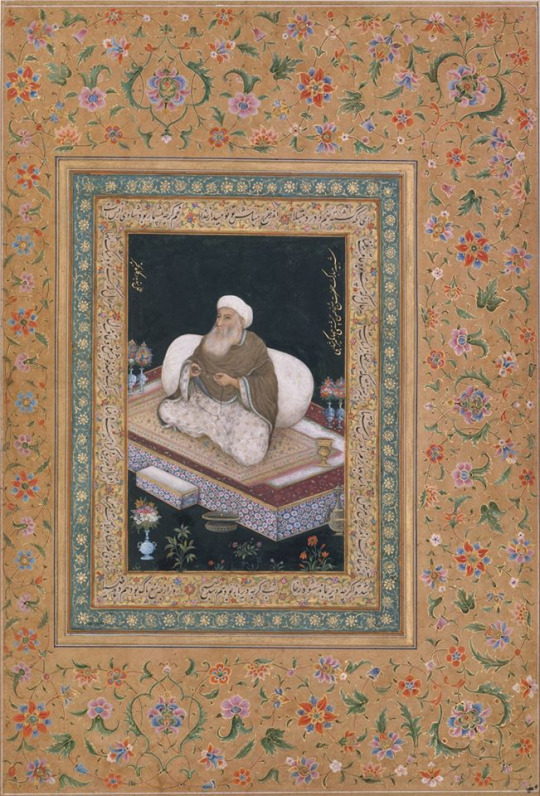
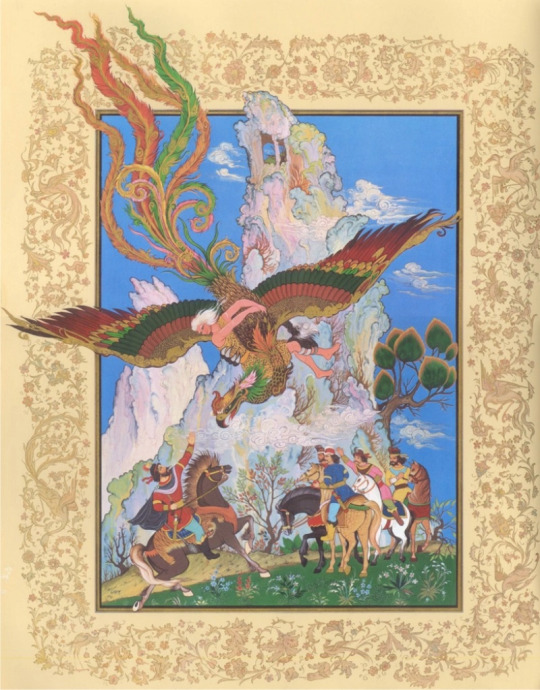
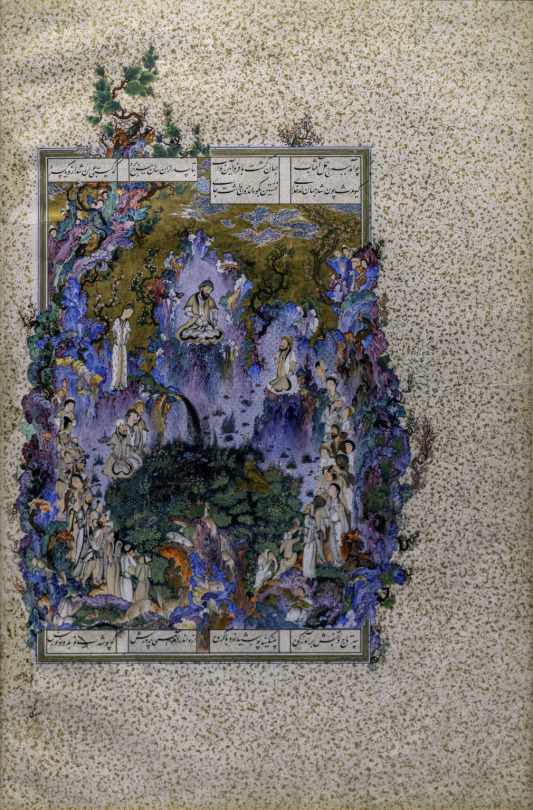
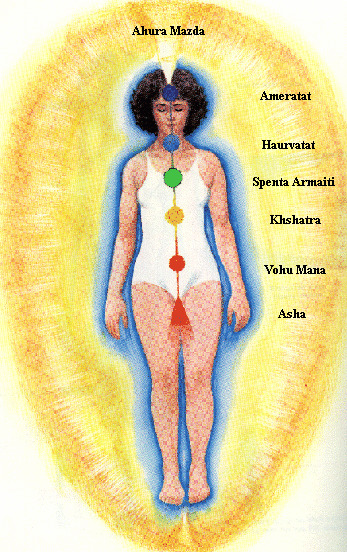
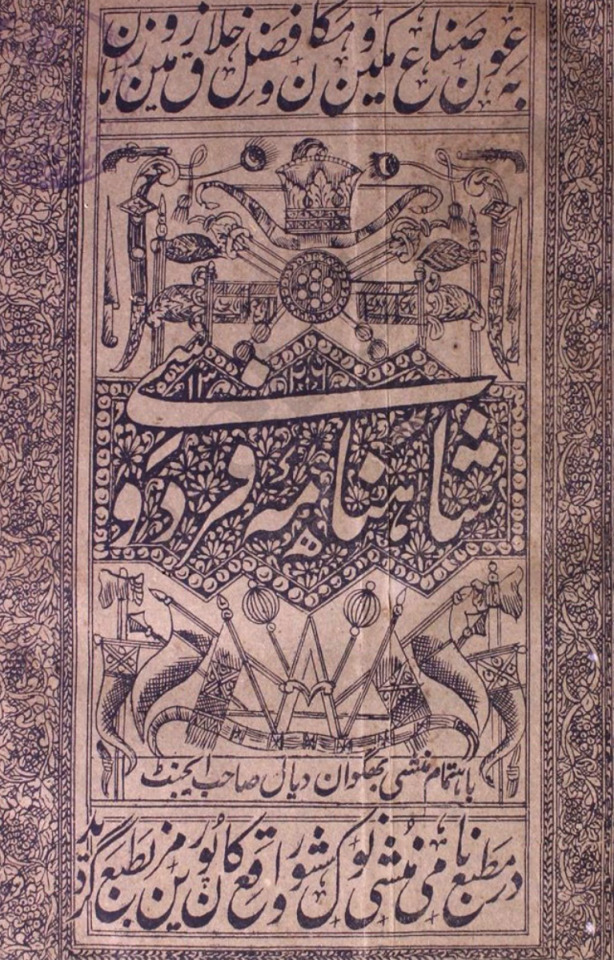
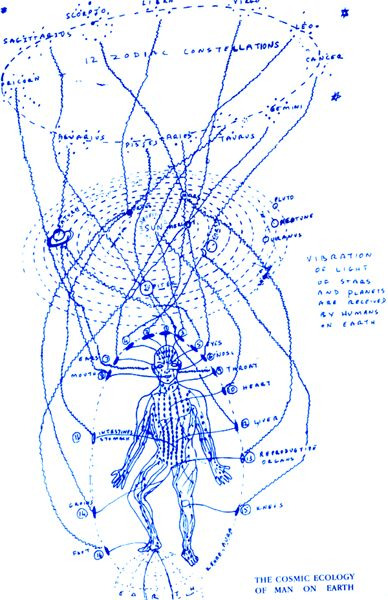
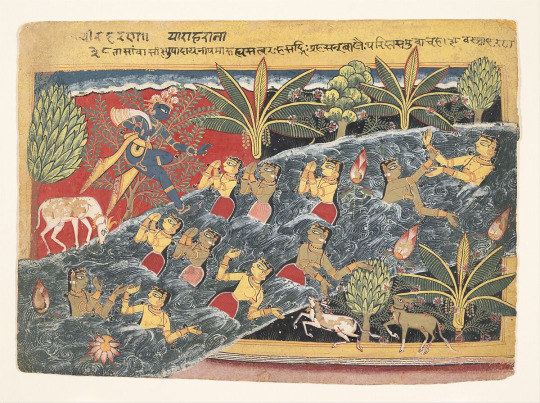
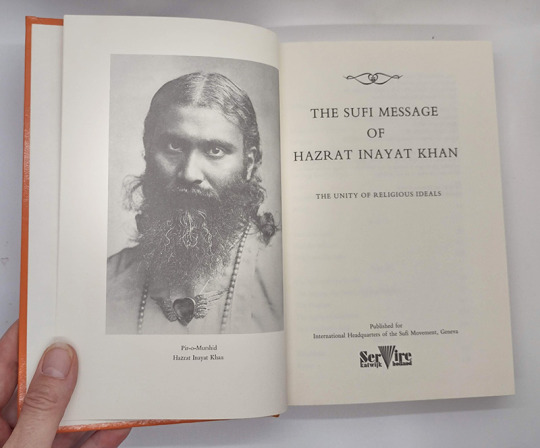
text from Pir Zia Inayat Khan's essay Persian & Indian Visions of the Living Earth in book Spiritual Ecology: Cry of the Earth
photos: Portrait of Shaikh Mu’in al-Din Hasan Chishti / The magical bird Simorgh / Shahnama / Amesha Spentas & Chakras / Shahnama cover Ferdowsi / Bhagavata Purana / Hazrat Inayat Khan
Ideas do not occur in a vacuum, and spiritual ideas are no exception. Sacred visions emerge from the disposition of human personalities, from the shape of historical events, and from the momentum of hallowed customs, but perhaps most fundamentally (transcendental sources aside), they emerge from “airs, waters, and places,” from the character of the landscapes in which they are born.
When epiphanies are redacted and passed down, the loamy pungency of their genesis frequently fades away, so that an abstract doctrine is perpetuated in place of an embodied insight. Such, however, is not always the case. Spiritual traditions are often the deepest repositories of a culture’s knowledge of the ancient bond between person and planet, soul and soil.
[...] The forces of light will thus gain ground, advancing in ascendancy, dispelling malevolence, and speeding the long-awaited day known as the frashkart, when the whole of creation is to be purified, redeemed, illuminated, and rendered immortal.
[...] All that exists is of light, for light is existence itself, the very essence of apparency. God is the “Light of Lights,” and as light kindles light, creation proliferates as a cascade of illumination poured into the dark abyss of nonbeing. In this great chain of being, the angels are links, uniting the manifest world with the infinite brilliance that is its source.
[...] There follows a long, though not infinite, series of Intellects, each receiving light from the Light of Lights and its predecessors, and bequeathing light to its successors. By this causal chain the starry sky is lit up.
[...] Nothing exists on Earth without an underpinning in the world of pure light.
[...] In like fashion, Suhrawardi’s cosmology envisions a universe that is intensely alive and inherently sacred. All existence is the effusion, in pulsing waves, of the holy of holies, the Light of Lights. Transpiring in every clod, puddle, flaming wick, and fluttering breeze is an angelic presence, a sentient and radiant delegate of the cosmic order.
[...] The Qur’an begins, “Read in the name of your Lord” (96:1). What must be read are the ayat, the signs of God. The verses of scripture are signs, but so too are the verses inscribed ”on the horizons and in themselves” (41:53). The holy books of the prophets, Earth’s rapturous geography, and the interior landscapes of the human soul are all of a piece, all pages in a single book, the book in which God’s own story is told. This is a story without end, for, “If all the trees on Earth were pens and the ocean ink, with seven oceans behind it to add to its supply, yet the words of God would not be exhausted” (31:27).
[...] As widely different as were the theological views of Muslim Sufis and Hindu yogis, they had two spiritual perceptions fully in common: the vital livingness of the elements and the status of the human form as a microcosm encapsulating the breadth, depth, and range of the whole universe.
[...] The Vamana Purana sings, “Let all the great elements bless the dawning day: Earth with its smell, water with its taste, fire with its radiance, air with its touch, and sky with its sound.”
[...] Hindu acts of worship are traditionally preceded by bhutashuddhi, the ritual purification of the elements in the body and in the landscape. In this manner the inner and outer dimensions of the universe are brought into symmetry, and the human being is sanctified as an epitome of the surrounding totality. The human heart contains fire and air, sun and moon, lightning and stars, pronounces the Chandogya Upanishad.
The Chishti Sufis share this perception. In the Sum of Yoga attributed to Khwaja Mu’in al-Din Chishti, the entire cosmos is mapped onto the human form:
Know that by His power God Most High created the human body to contain all that He created in the universe: “We will show them Our signs in the horizons and in themselves, until they see …” (41:53). God created the twelve signs of the zodiac in the heavens and also in the human body. The head is Aries, the neck is Taurus, the hands are Gemini, the arms are Cancer, the chest is Leo, the intestine is Virgo, the navel is Libra, the phallus is Scorpio, the thighs are Sagittarius, the knees are Capricorn, the shanks are Aquarius, the soles of the feet are Pisces. The seven planets that revolve beneath the zodiac may be located thus: the heart is the Sun, the liver is Jupiter, the pulmonary artery is the Moon, the kidneys are Venus, the spleen is Saturn, the brain is Mercury, the gall bladder is Mars. God the Glorious and Most High made 360 days in the year, 360 revolutions in the zodiac, 360 mountains on the face of the Earth, 360 great rivers, and in the human body, 360 segments of bone (like the mountains), 360 arteries (like the rivers), 360 epidermal tissues (like the days of the year). The motion of the stomach is like the sea, hairs are like trees, parasites are like beasts of the jungle, the face is like a built-up city, and the skin is like the desert. The world has its four seasons, and these are also present in man: infancy is spring, youth is summer, quiescence is fall, and old age is winter. Thunder corresponds to the voice, lightning to laughter, rain to tears.
To bring microcosm and macrocosm into harmony, yogis and Sufis practiced, and still today practice, kriyas, or meditations, corresponding to the four elements. In his Secret of Love, the twentieth-century Chishti Sufi ‘Aziz Miyan describes the elemental kriyas in this manner: “Earth kriya: Meditate while incrementally burying the body in the ground, from feet to head. Water kriya: Meditate while sitting underwater, lying in the rain, or pouring water over the body. Fire kriya: Meditate before a fire, uniting first with the smoke and then with the flame. Air kriya: Meditate standing on a tree, hill, or roof, wearing a single cloth, facing the wind. Breathe in and out slowly and deeply, inducing the sensation of flight.”
[...] Hazrat Inayat Khan conceived of the Earth as an animate, and in some sense sentient, whole. He wrote, “If the planet on which we live had no intelligence it could not have intelligent beings on it.”9 If Earth possesses a kind of sentience, it follows that the planet may be susceptible to suffering, and Hazrat Inayat Khan made just such an assertion when he wrote, “My deep sigh rises above as a cry of the Earth, and an answer comes from within as a message.” The message of his talks and writings was a call to contemplate the moral and spiritual interconnectedness, and ultimate ontological unity, of all life.
[...] The sacred texts of Mazdaism, Hinduism, and Islam provide a profusion of illuminating perspectives on the nature of embodied existence. While there are undeniable differences in the worldviews communicated in these texts, certain key principles emerge as common understandings. Foremost among these is the insight that the manifest universe is a marvel of providential grace. Following on this is the perception that not only humans, animals, and plants, but all material forms partake of the pervasive light and power of creation, and bear recognition as spiritually alive. Further, the texts make clear the error of imagining human life as hovering autonomously above the natural world. Mystical contemplation of the human form conduces to the realization that the body is profoundly embedded within the wholeness of nature, a totality that each human physically and spiritually personifies. The Indo-Persian prophetic traditions agree: the Earth is alive, we live in and through her, and as we are in her keeping, so is she in ours.
4 notes
·
View notes
Text
ISLAM 101: Spirituality in Islam: Part 184
(Ta‘ayyunat) Identifications and What Lies Before
Literally meaning coming forward, emerging and being made specific, in Sufi terminology ta‘ayyun means that the different natures or different essential characteristics inherent in the Divine Being manifest themselves with different wavelengths and ranks and infinitely expand in the All-Existent, the All- Life, and the All-Knowledge beyond all modalities of quality. In the rank of absolute Necessity, ta‘ayyun is called the First Manifestation, the All-Sacred Emergence, the Breath of Mercy, while in the rank of contingency it is known as the First Intellect, the Most Exalted Pen, the First Light, and the Truth of Muhammad or the Muhammadan Truth.
Even though there is nothing explicit in the Qur’an or the Prophetic Traditions concerning ta‘ayyun, it can be said that the statements regarding elevated, metaphysical realms such as Divine Knowledge, the Supreme Preserved Tablet of Truth, and the Manifest Record also relate to the rank of ta‘ayyun(identification) either by allusion or implication. Some Sufis such as Muhyid-Din Ibnu’l- ‘Arabi and as -Suhrawardi, as well as Mulla Jami‘, who was a great lover of God, and Ismail Haqqi Bursavi from among the Ottoman Sufi scholars and authors, have seen the things we perceive with our five senses as the manifestations of the ideal forms in the Realm of Ideal Forms or Representations.[1] They have, in turn, perceived the ideal forms or pictures as mirrors of spiritual substances, the spiritual substances as the growths of the identifications in Knowledge, the identifications in Knowledge as reflections of the archetypes (previously discussed),[2] the archetypes as the manifestations of Divine Names (to be discussed later),[3] the Divine Names as scenes or spectacles of the Divine Attributes of Glory, and the Divine Attributes of Glory as the descriptive designations of the Pure Divine Being. However, the approaches of Imam ar-Rabbani[4] and his followers are different and worthy of discussion.
The things and abstract natures which are not included in the identifications in question and which we can designate as “contingent truths” do not share this rank of identification. On account of their existence in Divine Knowledge and the places that have been assigned to them on the Supreme Preserved Tablet of Truth—these places are turned to the Divine Names in respect of the ability and the capacity that have been bestowed on them—they proceed to the different ranks of identification through the messages that emanate from the Divine Attributes of Glory and through the manifestations of Divine Names; from here they proceed to the archetypes, and then to the external existence on the workbench of the Divine Will and Power, thus continuing to be mirrors (to all abstract Divine truths).
All the faces that are turned to the Divine Names look to the All-Sacred One, Who is called by these Names, from behind veils. In this rank or step, the Name al-Bari (the All-Holy Creator) is the first “intercessor” or the first addressee of the All-Glorified’s Will. This blessed Name manifests Itself in connection with the glorious Name the All-Powerful, Whose “eye” is, in turn, fixed on the Name the All-Willing. This supreme Name is turned to the all-encompassing Name the All-Knowing. All things at all the ranks of identification, which have their existence in Divine Knowledge, are abstract pictures, meanings, or the immaterial substances in the all-encompassing design, which is the infinite arena of the manifestation of the Divine Attribute of Knowledge. Each member of creation in this design passes through different steps of identification to rise to their potential level of perfection.
Along the lines of the identification discussed above, the abstract truths that exist in the encompassing area of Divine Knowledge beyond all modalities of quality and quantity and beyond all forms of comparison, proceed in extraordinary measures toward their fully developed forms in the direction established by the Command and Will of the Lord of the worlds and in dependency upon their relative realities and first compacted identification. The All-Willing is God; therefore, Will is His Attribute and the measures belong to Him. The All-Developing is an Attribute of Glory belonging to the Lord of the worlds, and developing and unfolding originate in His being the Lord. He is the unique owner of the reality, “God does whatever He wills and decrees however He wills.” As stated in the verse, He directs all affairs (as the sole Ruler of creation), and He sets out in detail the signs and proofs of the truth(13:2), determining, directing, developing, and unfolding belong to Him exclusively.
On account of His Divine Essence, He is the All-Unique of absolute Oneness, and with respect to His Attributes, He is the One of absolute Unity. Behind all the worlds of multiplicity, in their origination and arrangement, and at all the ranks or degrees of identification, the manifestations of His Uniqueness and Unity are observable. Divine Uniqueness, which we can also designate as the Essential Uniqueness of the Divine Being, or as Absorption within Absorption, or the Truth of Truths, is the rank to which all of the Divine Attributes and Names are referred; the one favored with perfect knowledge of God who has spiritually experienced this rank is aware of nothing other than Him. As for the rank of Divine Unity, which is also called the Rank of Absorption, this is a Divine door opening onto the manifestations that extend toward multiplicity, and this is a horizon of mysteries where the compacted essences begin developing and unfolding. If we view the first of these two ranks in the name of identifications as a table of contents or a seed, I hope it would not be harmful to see the other as a book, or as a tree, or as the source of all the worlds that have come into existence.
Some have understood the first identification as the manifestation of the Divine Being in His Own Essence and have designated this identification, concerning which any Attribute or Name cannot be in question, as the All-Sacred Uniqueness. This approach marks the initial truth that there is nothing other than the Divine Being. The Prophetic Tradition, “God was and there was nothing else besides Him,”[5] expresses this truth, which points to the Divine Essence Himself. Actually, it is difficult to make any interpretation concerning the nature of identification in this rank where nothing other than the Divine Essence can be mentioned.
The appearance of the Divine Uniqueness as a manifestation on the horizon of Divine Unity beyond description or any modality of quality is the peak at which identifications begin. The transcending, imperceptible “ identification as Existence” and “ identification as Knowledge” can only be imagined as ambiguous, imperceptible natures or programs after this first or highest rank; they are beyond all modalities of quality, and any capacity of perception, and beyond all comparisons. In this second rank of identification, the spirit, archetypes, and “ideal” existences are forged to creation or external existence on the workbench of Divine Will and Power under the guardianship of the Divine Names upon which they depend and in accordance with the plans and projects that are recorded on the Supreme Preserved Tablet of Truth.
The Most Exalted Pen, dependent on the First Intellect, which is regarded as the first identification from another perspective or in the rank of contingency, is the means of the inscription of Divine commands of creation, and the “words, sentences, and paragraphs” of the Divine pattern of creation which are projected on the tablet of the essential natures are the results of its development, expansion, and elaboration. According to the approach of Bediüzzaman: “If this universe is to be viewed as a macro book, the light of our Prophet, upon him be the most perfect blessings and peace, is the ink of the Pen of the Author of that book; if the universe is considered as a tree, his light is both its seed and its most illustrious fruit. If existence is regarded as a macro living being, his light is its spirit.”[6] For this reason, with respect to creation, our Prophet is “everything” both as a seed at the beginning of contingent existence and its most illustrious fruit.
Since it would imply an attribution of temporal or accidental occurrences and changes to the Divine Essence, no identification has been accepted with respect to the Divine Essence. For it is not permissible to attribute any temporal or accidental occurrences to the Eternal Being Who has no beginning and is uncontained by time. Although everything is a manifestation of His Existence, Life, and Knowledge, neither the images in “mirrors” nor the forms on “screens” can ever be He.
As for identifications in the form of creation, they exist and subsist by following one another in dependence on their sources. We can liken this to a straight line which moves or is spun continuously and at great speed, thus appearing as a flat surface.
Some have seen the mysteries of the rank of Divinity in identifications in Knowledge and the secrets of creation in the identifications perceptible by the intellect. They have discerned the Mercy at the beginning of the identification of Divinity and emphatically expressed that the creation of the universe is based on Mercy. According to those who think thus, Mercy is essential in creation; everything comes from It and returns to It. Things such as misguidance, wrath, unbelief, and ingratitude are accidental and deviances caused by the misuse of free will.
All existent things and/or beings have passed through the spiritual, ideal, intermediary, and external stages of existence through identifications of Knowledge and as a consequence, the seed has grown into a massive tree. The first identification was, in one respect (in the rank of contingency), manifested as the truth of humanity. Prophet Adam and his progeny have formed the most important link of this process with their “bright” and “dark” aspects. The master of creation, upon him be peace and blessings, who, despite coming later in time, outstripped and excelled all others, and his believing and devoted Community have been exalted with the most perfect of statures and the distinction of being the nearest to the realization of the Divine purposes of identifications. For the master of creation is the most comprehensive and brightest mirror of Divine truths and the central point of the first, last, outward, and inward dimensions of existence, which were appointed by God’s being the First, the Last, the All-Outward, and the All-Inward.
It is possible to express these subtle points in a more understandable way as follows:
Identification has been considered within different Divine and creational frameworks. The beginning of Divine identification is God’s Attribute of Knowledge, and its end is God’s limitless words of Glory, which have different degrees. The first of the creative identifications is the spirit of Muhammad, upon him be peace and blessings, and its finality is the tree of all of humankind with all its branches including those of the Prophets and Messengers, and the garden of the entire existence. Those who have interpreted the Divine identification as the Hidden Treasure have designated it as the Most Inward of the Inward, and considered it in the context of the eyes do not comprehend Him (6:103), and the basic principle, “(Admission of one’s) incapacity to perceive Him is perception itself.”
The spirit of Muhammad, upon him be peace and blessings, is a pure substance of light free from matter and the Universal Intellect, which has perfect knowledge of the All-Glorious Creator. The Prophetic saying: “The first thing which God created is intellect,”[7] indicates this depth; some call it the Supreme or Most Superior Spirit. For in one respect, the everlasting Life of the Divine Essence first expanded in that mirror in the universe, and as declared in the hadith qudsi: “But for your spiritual existence, (which apparently consists in a single entity in respect of its relation with Divine Existence and in a body in the external realm, but which is so broad as to contain the entire universe as being the seed of the entire creation in Divine Knowledge, and which is regarded as the cause of the creation of the universe,) I would not have created the worlds,”[8] Prophet Muhammad, upon him be peace and blessings, is the purpose for the creation of the universe. Out of His Will of Glory, God Almighty bestowed on that illustrious being His mysterious key to the first door, or initial development, of the Hidden Treasure, and made Him the center on which His love is focused. Therefore, as stated in the following couplet of the respected Qudsi:
All things have come into existence from “I was a Hidden Treasure,” The ocean of love has produced waves through the breeze of His love. the mysteries of Divinity were known through Prophet Muhammad to the extent they could be known, and the expansion and unfolding of the mysteries of His Lordship were witnessed through him. God Almighty, Who knows and sees His Own Essence and observes His Essence in Himself, has also made Himself known or opened a blessed door to be known by everybody through our master’s brightest mirror. How well Süleyman Çelebi speaks:
I have made your being a mirror to My Being, I have also inscribed your Name together with Mine.
….
Turn to the world and call them to Me, So that they may come and see My Face. Both through his first identification as a seed or nucleus marking the beginning of creation and through his growth and expansion like the Touba tree of Paradise in his earthly life, Prophet Muhammad was honored with being chosen, in the words of Bediüzzaman, to be the ink in the Pen of the Author of this book of the universe, and he was distinguished with developing into a most fruitful blessed tree and being the source of dazzling and magnificent “gardens” and “orchards.” Prophet Muhammad, upon him be peace and blessings, is the basic meaning of the poem of creation, the central embroidery in the lacework of existence, and the most meaningful part or rhyme of the poetic composition of Prophethood and Messengership, reflecting its spirit and contents. The heavenly Revelation manifested through him is the most comprehensive voice of the heavens and earth; his happy Ascension, which combines the nearest and farthest points of the universe, is an untouched gift of the Garden of Divinity to him in return for his magnificent position and attainments and a reward from the All-Munificent, the All-Generous—a reward that no one else has ever been or will ever be favored with. Just as through the rays of the Revelation impressive of infinitude, Prophet Muhammad felt and experienced transcendent mysteries beyond human considerations, which eyes have never seen nor ears have ever heard, so through his blessed Ascension he observed the entire existence from beginning to end and enjoyed exceptional experiences in the name of the Divine Essence, Attributes, and Names.
His experiences were of an exceptional profundity, and making God known by others was the expression of his unparalleled appreciation; his ability to guide natures of sufficient capacity to their perfection was an incomparable success. People of perfection have been able to recognize true perfection and perfectibility through him and the peaks that seem to be insurmountable have been surmounted through him. The respected Aziz Mahmud Hudai[9]says:
All perfected ones have attained perfection through your light; Your existence is the perfect mirror of God, O God’s Messenger. This means that God’s Messenger, upon him be peace and blessings, was exceptionally favored with complete manifestations of Divine Names and Attributes of Glory.
According to the respected Imam ar-Rabbani, the first identification is that of Existence or Existential Identification, and all identifications of Names and Attributes depend on this. From another different perspective, the All-Sacred Divine Essence and Attributes seem to be of the same rank. For this reason, to arrive decisively at the conclusion that the Attributes are different or other than the Essence would not be correct. For although the Attributes are particular and indispensable to the Divine Essence, and mark the unfolding of His Perfection, neither the Attributes themselves nor their unfolding or relation with the Essence should ever be thought of in terms of the created beings and their attributes. What is appropriate in viewing this matter, which is beyond our comprehension, is being content with the relevant statement of God and His Messenger.
Since God’s eternal Knowledge relates to everything in the existing realms and the realms of non-existence within the framework of certain identifications, billions times billions of spiritual, ideal, intermediary, and corporeal forms come into being. But this would never mean that the Divine Essence and Attributes are changeable. Both the Essence and Attributes are of the unchangeable rank, and all the changes and different states and natures belong to their mirrors.
The respected Imam ( ar-Rabbani) has a different approach to the beginning of the ranks of identification. According to him, the beginning of Prophet Abraham’s identification is in one respect the first identification; its being the first rank of identification is on account of identification in regard to existence or existential identification in the non-Divine realm. At the central point of this identification is the beginning of the master of creation’s identification. In other, clearer words, the Truth of Muhammad is a comprehensive truth and is like the nucleus of the first identification. The truths of not only all other Prophets and Messengers but also the angels, upon them all be blessings and peace, are shadows of that central point or nucleus and Divine inscription. The Prophetic sayings: “The first thing which God created is my light,”[10] and “God created me out of His Own Light and believers out of my light,”[11]mark or refer to this reality.
In addition, that most supreme light among the creation is the most reliable and trustworthy means and guide of reaching the Ultimate Truth, while the other Prophets are each an extended shadow that revolve around the axis of this guide. The Truth of Ahmad (embodied by Prophet Muhammad before his external existence in the world), in one respect, and the undying Truth of Muhammad, upon him be peace and blessings to the fullness of the heavens and the earth, is a transcendent truth which stands at the intersection of Absolute Necessity and contingency, as referred to in So he was (so near that there was left only the distance between) the strings of two bows (put adjacent to each other), or even nearer (than that) (53:9). The identification of this truth is identification in Knowledge and is characterized by love. It was the reason or purpose of the existence of the universe, and the fact that it is identification in Knowledge marks the beginning of all other identifications and manifestations.
Muhyid-Din ibnu’l-‘Arabi and those who follow his way of thought have regarded the first identification, which they have viewed as the Truth of Muhammad, as the summation of Divine Attributes of Glory on the horizon of Knowledge. As mentioned before, Imam ar-Rabbani and those who think like him (whether they came before or after him) have viewed the first identification as identification with respect to Existence and stressed that its central point is the Truth of Muhammad, upon him be the most perfect blessings and peace. They have therefore argued that it is not possible to think of the creation without considering God’s all-sacred, transcendent love of Himself, and the identification that is affiliated with Existence. The Truth of Muhammad is the origin of all identifications in the non-Divine realm, or it is of central character, while all other spheres of identification around it are shadows in relation to that supreme light. All spiritual, ideal, substantial, accidental, and corporeal identifications are like lamps which receive their light or are lit from it. How well Imam Busiri[12] speaks:
All the miracles the other noble Prophets worked, Were only things that reached them from his light. He is the sun of virtues, while the others were the stars, Which shine only at night (when there is no sun). Prophet Muhammad, upon him be peace and blessings, was the ultimate purpose for the existence of the universe and the only existent being who was talked about in the realms beyond. He was the first rose which bloomed on the breast of non-existence in the non-Divine realm. He was the nightingale whose voice resonated in the garden of the universe. He was the perfect leader and the unique guide in all aspects of life, and he was the fine lace that lay over the form of creation prior to ethereal existence.
O God! Bestow blessings and peace on our master Muhammad; he was the first of the Prophets, whom You created out of Your Light; and he was the last of the pure, godly and those nearest to You, whom You created out of Your effulgence. He was confirmed by miracles and chosen for Messengership. And bestow Your blessings and peace also on his Family and Companions, who explained what he brought from You, and set forth its proofs, and publicized it.
[1] Please refer to the explanations concerning this realm in the 3rd volume of Emerald Hills of the Heart. [2] Please refer to matters discussed in connection with the spirit in the 3rd volume of Emerald Hills of the Heart. [3] The issue of archetypes was also discussed previously in the 3rd volume of Emerald Hills of the Heart. [4] Imam Rabbani, Ahmad Faruq al-Sarhandi (d. 1624): The “reviver of the second millennium.” Born in Sarhand (India) and well-versed in Islamic sciences, he removed many corrupt elements from Sufism. He taught Shah Alamgir or Awrangzeb (d. 1707), who had a committee of scholars prepare the most comprehensive compendium of Hanafi Law. His work, The Letters are very famous and widely known throughout the Muslim World. [5] See footnote 37. [6] al-Mathnawi al-Nuri – Seedbed of the Light (trans.), New Jersey, 2007, p., 169. [7] ad-Daylami, al-Musnad, 1:13; Ibn Hajari’l-Asqalani, Fathu’l-Bari, 6:289. [8] ‘Alliyyu’y-Qari, al-Masnu‘, 150; al-Asraru’l-Marfu‘a, 1:385; for variant wordings of this hadith qudsi, see al-Hakim, al-Mustadrak, 2:672; al-Bayhaqi, Dalailu’n-Nubuwwa, 5:489. [9] Aziz Mahmud Hudai (1541–1648) was among the most famous saints in the 17th century Ottoman Turkey. He was a judge in Bursa for some time. Then he moved to Istanbul as a preacher and spiritual teacher. He has a Diwan containing his poems. [10] al-Alusi, Ruhu’l-Ma‘ani, 8:71; al-‘Ajluni, Kashfu’l-Khafa’, 311–312. [11] al-‘Ajluni, ibid., 1:311. [12] Muhammad ibn Sa‘id al- Busiri (Busayri) (1212–1296) was born and mainly lived in Egypt. He studied both Islamic sciences and language and literature. He is known primarily for his Qasidatu’l-Burda (“The Eulogy of the Cloak”), which he wrote in praise of our Prophet Muhammad, upon him be peace and blessings.
#allah#god#islam#muslim#\quran#revert#convert#convert islam#revert islam#reverthelp#revert help team#help#islamhelp#converthelp#how to convert to islam#convert to islam#welcome to islam
2 notes
·
View notes
Text
KHUSHU and HURMA (Reverent Awe and Respect): Part 2
There are still others who refer to “ annihilation in God�� and “ subsistence by and with God” in a relatively more sober style, thus displaying a different state according to the content of their subconscious, saying:
I have submitted whatever I had to that Friend, so I no longer have a house;
I have been liberated from everything, so I have nothing in the name of the two worlds.
For God’s love has reached me and attracted me to itself;
It has opened the eye of my heart, so I am no longer intoxicated.
Ahmedi
The saintly, purified scholars, on the other hand, such as Junayd al-Baghdadi, who traveled in the light of the Prophetic lamp, always acted with self-possession, breathed with reverent awe, and their eyes twinkled with heart-felt veneration, without causing those who were incapable of traveling a spiritual path to fall into confusion or deviation. Some other close friends of God, such as ash-Shibli and those of a similar disposition, revealed their sensations under the influence of their nature, and caused those who had no connection with spirituality to be informed of certain secrets, thus providing an opportunity to criticize both these people and their way. However, they never behaved improperly or displayed disrespect in adherence to the essentials of the journey. As for the people of heart, such as al-Hallaj, as-Suhrawardi and Ibnu’l-Farid, although they were sincere in their love and yearning, and were favored with a certain degree of attraction and the feeling of being attracted, they were not able to act with self-possession, due to their continuous intoxication and absorption, nor to remain distant from improper utterances that would cause misunderstanding, thus laying some ground for certain reckless acts and manners.
The true heirs to the Prophetic way have always traveled in self-possession, weighing up their visions and inner sensations on the balance of the Sunna, evaluating their spiritual unveilings according to the established truths and criteria of the Religion, and doing their utmost in order not to lead the common people into confusion. While they have attached great importance to nearness to God, they also have tried to show utmost respect in their relationship with Him, and have preserved their good manners, heartfelt veneration and reverent awe. Over time, with the reflection of their heart-felt veneration and reverence in their everyday acts, behavior, and words, they have become heroes of self-possession and the representation of Islam, acting as examples for others in their relations with both the Creator and the created.
Their hearts, where their perception of God’s Grandeur, Majesty, and Dominion were combined with their admission of their innate impotence, poverty, neediness and essential nothingness, always beat with utmost respect and adoration. This state was manifest in their acts and speeches. They always acted properly and preserved their good manners and respect both at the beginning and at the end of the path, breathing reverent awe and remaining humble and modest even when they reached the level of angels. However, this does not mean that all of them were of the same level in their knowledge of God. Rather, there were considerable differences among them in this respect. Among them were those who pulled themselves together and bent double in reverent awe whenever they remembered God, and there were those who breathed self-possession and vigilance with the consideration that God saw them in whatever state they were or with whatever task they busied themselves, as they spent their life in complete awareness of God’s omnipresence.
In whatever stage of the journey and at whatever degree of certainty they may be, a traveler toward God should never fall short of reverent awe and heart-felt veneration. It should be pointed out here that having reverent awe is different from appearing to have it. God always wants His servants to try their hardest to deny themselves in profound modesty and the admission of their essential impotence and poverty, thus confirming Him with His absolute Power and Riches. Appearing to have more reverence and awe than one really feels in their heart is hypocrisy and disrespect for God. If reverent awe is a requirement of servanthood to God—and there is no doubt that it is—it is the arm or wing of the traveler in their journey toward the Ultimate Truth; it is their greenhouse and their shield, their safety belt and lifeline. Those who advance with such an arm or wing, who manage to enter this greenhouse and use this shield well as a means of Divine protection, those who fasten this safety belt and hold fast to this lifeline continuously advance on the path without slipping; they are able to act in self-possession and show respect to God on the path that goes towards Him. When they reach the end of the path by which they can meet and achieve intimacy with Him, they are under the influence of this subconscious attainment, which they have developed into a significant depth of their nature. For they have come to know what they should know—they have come to know this in the way the heroes of knowledge of God know. As declared in the verse, Of all His servants, only those possessed of true knowledge stand in awe of God (35:28), only those who are able to recognize or know Him with His Attributes of Glory and All-Beautiful Names and who are able to travel in the horizon of living as if seeing God or in awareness of the fact that God sees whatever we do and say, are able to feel the required respect, reverence, and adoration for God in whatever state they may be. However, they differ in the degree of their knowledge according to the capacity and certainty of each.
servant’s self-possession and adoration of God and their manners are proportionate to their recognition and knowledge of God. The most knowledgeable of the knowledgeable, upon him be peace and blessings, reminds of this fact by saying: “I am the one who has the greatest awe of God and who is the most God-conscious.” The conclusion of the verse mentioned above also corroborates this. The conclusive statement, Surely God is All-Glorious with irresistible might, All-Forgiving, which combines hope and fear and encouragement (toward good) and discouragement (from evil), moves the spirit with feelings of reverent awe, respect, and adoration. For the All-Forgiving gives the glad tidings of pardon and brings relief, while the All-Glorious with irresistible might warns that God has the power to do whatever He wills, is absolutely undefeatable and irresistible, and is the sole Sovereign on the throne of sovereignty. Therefore, in accordance with the Qur’anic declaration, (He) feels awe of the All-Merciful, though unseen (beyond their perception) (36:11), a traveler toward God’s presence who is to be honored with vision of Him always considers His Majesty and Grandeur, trembles and never abandons themselves to carelessness with the excuse that God is the All-Merciful. At the same instant, when such a traveler thinks of God’s being the All-Forgiving and the All-Compassionate, they are startled by the pronouncement, I surely am the All-Forgiving, the All-Compassionate, and My punishment—it is indeed the painful punishment (15:49–50), and they always breathe with feelings of reverent awe and heart-felt veneration.
In addition to being a safety belt for those who are at the beginning of the path, reverent awe and heart-felt veneration are a powerful dynamo of warning for the heroes of intimacy with God in the horizon of meeting with Him, acting as a break against recklessness and improper utterances. It is only with this feeling that while those who are at the beginning of the path can traverse the most dangerous stages of the journey with the least difficulty and without being entangled in anything, those who have reached the end of the path can fulfill what is due to their position and are saved from the pitfall of changing meeting into separation and intimacy into isolation.
Whoever one is, to the extent that one is able to make their spirit feel heart-felt veneration and reverent awe, they are neither shaken by tedious fear of others nor do they have to bow before them in worry. As a matter of fact, in addition to ordering us to love Him and love others only on account of Him, God Almighty wants us to channel our feelings of fear into fear and reverent awe of Him. The Divine command, Do not fear them but fear Me! (3:175) is sufficiently explicit in this respe
#islam#muslim#allah#god#revert#convert#quran#ayat#help#hijab#muslimah#religion#reminder#dua#salah#pray#prayer#sunnah#hadith#prophet#muhammad#welcome to islam#how to convert to islam#new convert#new revert#new muslim#revert help#convert help#islam help#muslim help
2 notes
·
View notes
Text
“Love” is passion for conceiving an essence’s presence; “Desire” is the soul’s movement toward completing that passion.
— Suhrawardi, The Book of Radiance, transl by Hossein Ziai, (2012)
85 notes
·
View notes
Photo

King Hussein of Jordan meets with Huseyn Shaheed Suhrawardy, Prime Minister of Pakistan, in Amman on 5 August 1957. Suhrawardy's niece, Sarvath Ikramullah (daughter of his cousin Shaista) would later marry the Jordanian king's younger brother Prince Hassan 11 years later, in 1968.
3 notes
·
View notes
Text
Dr Tasneem Suhrawardy: A Scholar of Indian Medieval History Leaves Behind a Legacy
Dr Tasneem Suhrawardy, an esteemed academic specializing in medieval Indian history, passed away on Tuesday at the age of 58. Her untimely demise at Fortis Hospital, Gurugram, following a cardiac arrest, marks a profound loss to the academic community. She had been battling pneumonia and was undergoing treatment at the time of her passing.
0 notes
Text
Magia, Religião e Poder no Califado
É de se esperar em uma civilização como a civilização árabe-islâmica medieval, quando os mundos da cognição e da imaginação eram povoados por forças e seres sobrenaturais e milagrosos, por gênios, demônios, estrelas auspiciosas e inauspiciosas e várias formas de ação à distância, como na magia. Califas e sultões empregavam astrólogos que desempenhavam um papel análogo aos consultores de think tanks de hoje.
Estudiosos rigorosamente pietistas representavam apenas uma fatia alta, porém fina, da sociedade. Que os califas eram califas de Deus não é um fato difícil de aceitar. O que pareceria estranho é se esse não fosse o caso. Não há provas de que a cultura dos juristas e de outros ulama dominasse a sociedade. ‘Adud al-Dawla afirmou que o califa al-Ta’i a era o califa de Deus. Encontramos essa expressão frequentemente em textos históricos e ao longo das Mil e Uma Noites, além da poesia da corte que deu o título de Califa de Deus e seu significado associado aos califas de um período inicial na história do Islam. Essa dimensão carismática assumiu uma forma altamente específica e clara no início do regime abássida, com ecos de um guia espiritual escatológico ou Mahdi, e novamente com o califa Al-Nasir li-Din Allah (r. 1180–1225), que combinou a associação dos jovens futuwwa com a aristocracia de Bagdá, tornando-o, excepcionalmente para um abássida, um rei de Bagdá, pertencente ao tecido social da cidade.
Al-Nasir combinou, nas palavras de seu conselheiro espiritual e ideológico Shihab al-Din Abu Hafs al-Suhrawardi no livro ‘Adālat al-a‘yān ‘alā al-burhān, o califado, futuwwa e o sufismo, tornando seu carisma (baraka), sua espiritualidade e seu vínculo com a divindade perceptíveis para seus súditos, tendo incorporado o sufismo e a santidade associada a ele. É digno de nota que a santidade sufi não era a única capaz de milagres. Fontes históricas estão cheias de relatos de milagres realizados por ulama pietistas, incluindo Ahmad ibn Hanbal (780–855 d.C.), que parece ter se sentido constrangido a negar que bênçãos pudessem ser obtidas ao tocar seu corpo. Ele, no entanto, era capaz de curar com água na qual um fio de cabelo do Profeta havia sido mergulhado. Ele murmurava sobre a água e então a usava para curar o coxo. Seu túmulo tinha uma fragrância doce. Suas calças, cujo fio havia se rompido enquanto ele estava sendo chicoteado durante a perseguição de mihna iniciada pelo califa al-Ma’mun (que durou de 833 a 851), foram inexplicavelmente restauradas e esconderam sua nudez depois que ele murmurou algo baixinho. Outros curavam os doentes lendo o Quran e então cuspindo na pessoa que precisava de cura (um remédio muito antigo, praticado também por Jesus e Maomé); cabeças decepadas durante a mihna eram capazes de recitar o Quran.
É claro que o aspecto religioso do califado era complexo e significativo. Sua inflexão mágica às vezes era ligada aos movimentos carismáticos milenares aos quais a propaganda abássida não era alheia. Isso persistiu em movimentos como os fatímidas, a revolta de Ibn Qasi, com sede em Mértola, no Algarve, em 1144-1150, e a significativa dimensão mahdista no início do estado almóada no início do século XII d.C. Também é verdade que essa dimensão carismática efetivamente mágica foi transferida para o sultanato que estava ligado à religião, não por meio da magia, mas pela ordem legal, tornando-se ela própria infundida com carisma. Na realidade, essa ordem ligava o califado e dominava sultanatos independentes. O califado não era imaculado, de acordo com Ibn Khaldun, exceto na época do califado xarísta dos quatro primeiros sucessores de Maomé (ao qual ele acrescentou Mu'awiya), que teve apenas curta duração. Ela se limitava à ação profética e a questões do além, não à realeza mundana.
Fora dessas circunstâncias excepcionais, os pensadores muçulmanos — homens práticos, juristas, em vez de fantasistas, na maior parte — não admitiam nenhuma forma pura de justiça e retidão, mas viam um estado constituído legalmente, ou seja, um estado natural que tomava a jurisprudência muçulmana como seu sistema legal. O “Califado perfeito” que dispensava “justiça pura” era um sistema divino, com precedentes na época de Adão, durante alguns curtos períodos proféticos culminando na profecia de Maomé. Ele seria reencenado na época do aparecimento do Mahdi, quando os assuntos do mundo retornariam à sua condição original de acordo com uma teologia da história geralmente chamada de história da salvação, característica das visões monoteístas da história. Enquanto aguardavam o Fim dos Tempos, o califado ou melhor, os modelos de exemplaridade de Maomé e Medina eram, em termos práticos, uma era de ouro irrepetível e um mito de começos em termos teóricos e legais, entre outros. Pessoas que viviam em tempos posteriores de imperfeição só podem se aproximar do que foi transmitido na medida em que as circunstâncias o permitissem. Como em imitatio christi para cristãos piedosos, a pessoa e a prática do Profeta representavam a autoridade máxima e inatingível em termos de conduta pessoal. Lembrar das palavras e ações do Profeta trazia bênçãos proféticas (recitações públicas de Bukhari e Muslim eram e ocasionalmente ainda são ritos religiosos que solicitam bênçãos). Não há dúvida de que as transformações da imagem do Profeta na herança dos Salafiyya, especialmente por Ibn Taymiyya, tiveram influência considerável das concepções xiitas do imã semidivino, infalível e impecável, mesmo que essa atribuição de influência fosse vista com horror.
Secularism in the Arab World: Contexts, Ideas and Consequences - Aziz Al-Azmeh
#islam#califados#religião e estado#traducao-en-pt#cctranslations#secularismaw-aaa#califado abássida#al-nasir#sufi#ibne hambal#mihna#cura#califado fatímida#mahdi#profeta maomé#salafismo
0 notes
Video
youtube
হোসেন শহীদ সোহ্রাওয়ার্দী | Shahid Suhrawardy Biography
হোসেন শহীদ সোহ্রাওয়ার্দী: গণতন্ত্রের অগ্রদূত এবং অবিভক্ত বাংলার নায়ক"
হোসেন শহীদ সোহ্রাওয়ার্দী ছিলেন ভারতীয় উপমহাদেশের ইতিহাসে অন্যতম প্রভাবশালী রাজনৈতিক ব্যক্তিত্ব এবং গণতান্ত্রিক আন্দোলনের পথিকৃৎ। এই ভিডিওতে আমরা তাঁর জীবনের শুরু থেকে শেষ পর্যন্ত প্রতিটি গুরুত্বপূর্ণ অধ্যায় তুলে ধরেছি।
🔷 বিষয়বস্তু: তাঁর জন্ম ও পরিবার সম্পর্কে বিস্তৃত বিবরণ। কলকাতা বিশ্ববিদ্যালয় থেকে অক্সফোর্ড পর্যন্ত শিক্ষাজীবনের গল্প। কংগ্রেস থেকে মুসলিম লীগে যোগদান এবং পাকিস্তান আন্দোলনে অবদান। ১৯৪৬ সালে অবিভক্ত বাংলার মুখ্যমন্ত্রী হিসেবে দায়িত্ব পালন এবং সাম্প্রদায়িক দাঙ্গা মোকাবিলার কৌশল। পাকিস্তানের প্রধানমন্ত্রী হিসেবে তাঁর চ্যালেঞ্জময় শাসনকাল। গণতন্ত্র প্রতিষ্ঠার জন্য সংগ্রাম এবং রহস্যময় মৃত্যুর ঘটনা।
🔷 এই ভিডিওটি কেন দেখবেন? বাংলার ইতিহাসে হোসেন শহীদ সোহ্রাওয়ার্দীর অপরিসীম অবদান জানার জন্য। পাকিস্তানের রাজনীতিতে তাঁর গুরুত্বপূর্ণ ভূমিকা সম্পর্কে জানার জন্য। এক বিস্ময়কর রাজনৈতিক ব্যক্তিত্বের জীবন থেকে প্রেরণা পাওয়ার জন্য।
🔷 ভিডিওর আকর্ষণীয় বিষয়: অজানা তথ্য ও ঐতিহাসিক ঘটনা। রাজনীতির জটিল দিক ��হজ ভাষায় বিশ্লেষণ। বিরল ও ঐতিহাসিক ছবি ও ডকুমেন্টারি ফুটেজ।
🔷 ভিডিওটি দেখলে কী শিখবেন? হোসেন শহীদ সোহ্রাওয়ার্দীর জীবন ও কর্ম সম্পর্কে বিস্তারিত জ্ঞান। বাঙালি জাতীয়তাবাদ ও গণতন্ত্রের জন্য তাঁর আত্মত্যাগ। ইতিহাস থেকে বর্তমান রাজনীতির সাথে তাঁর অবদান এবং প্রাসঙ্গিকতা।
🎥 আপনার মতামত আমাদের জানাতে ভুলবেন না! আপনার প্রশ্ন বা মন্তব্য আমাদের জানান। ভিডিওটি পছন্দ হলে শেয়ার করুন এবং আমাদের চ্যানেল সাবস্ক্রাইব করুন।
#হোসেন_শহীদ_সোহ্রাওয়ার্দী #গণতন্ত্র #বাংলার_ইতিহাস #পাকিস্তান_রাজনীতি #মুখ্যমন্ত্রী #গণতান্ত্রিক_আন্দোলন
হোসেন শহীদ সোহ্রাওয়ার্দী, পাকিস্তানের প্রধানমন্ত্রী, বাংলার ইতিহাস, মুসলিম লীগ, স্বাধীনতা সংগ্রাম, পাকিস্তান আন্দোলন, সোহ্রাওয়ার্দীর জীবন, বাঙালি নেতা, বাংলার মুখ্যমন্ত্রী, পাকিস্তানের ইতিহাস, Huseyn Shaheed Suhrawardy, Suhrawardy biography, Bengal history, democratic leader, Muslim League, Pakistan movement, political history, Bengal prime minister, democratic movement, Suhrawardy's life, Bengali leader, Pakistan history
0 notes